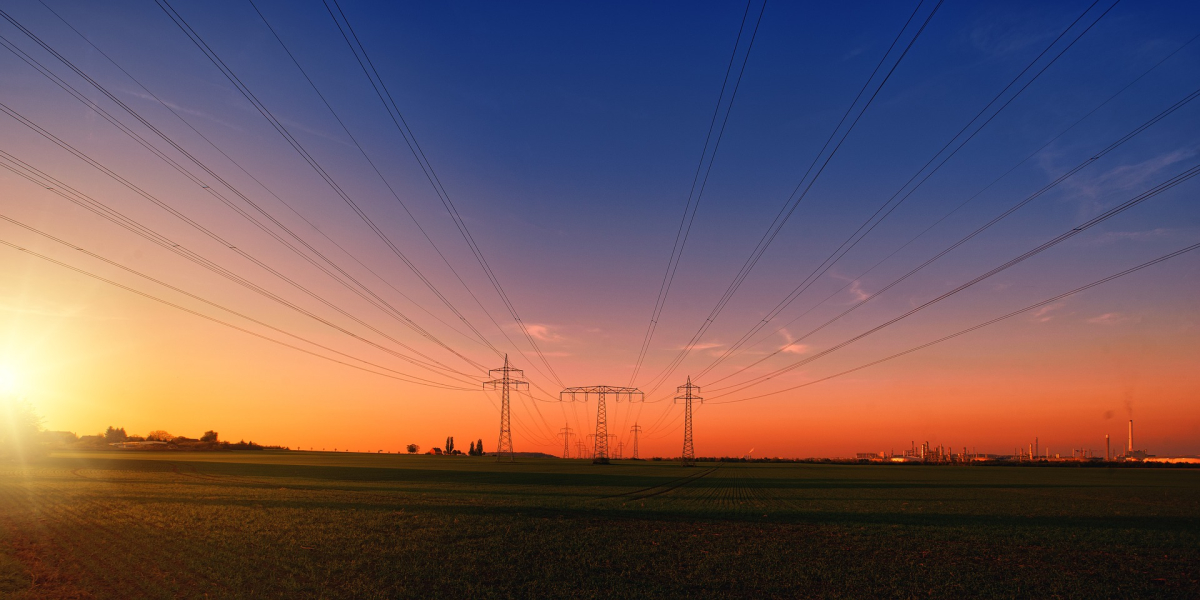Pioneers on the energy frontier

Blockchain is a distributed, digital transaction technology that allows for securely storing data and executing smart contracts in peer-to-peer networks (Swan, 2015, p. IX). This is potentially disruptive, as trusted intermediaries could become obsolete. Banks and, more generally, the financial sector were the first ones to become aware of the technology via the cryptocurrency Bitcoin, which operates on the basis of Blockchain. But with the recently added possibility to conduct smart contracts via a platform called Ethereum, Blockchain has gained increasing attention outside the financial sector. Conferences on Blockchain-based cryptocurrency Bitcoin are flourishing, startup competitions are held to spot the Blockchain equivalent of Amazon and Uber, and venture capital so far has raised $1.1bn to scale business models of the future (Weusecoins.com, 2016).
Meanwhile, another major disruption is occurring in the energy sector. Germany’s energy transformation, or Energiewende, is seen as a role model for the move toward a carbon-neutral energy supply. The process of reshaping the German energy system had already started in the 1990s, when it was decided to expand the share of power generation from largely carbon-neutral – albeit intermittent – renewable energies. In 2011, the German government decided to phase out its nuclear power fleet by 2022, which accelerated the transition.
In 2016, approximately a third of Germany’s electricity consumption was generated from renewables. Yet, the German energy transformation is currently undergoing dramatic changes: The government has reduced financial incentives for the installation of new renewables, in particular photovoltaics. Investments in renewable energies declined from €27.9 billion in 2010 to €14.4 billion in 2016 (BDEW, 2017). The electricity price on the wholesale market is in decline, but average household tariffs remain at around €0.28 per kilowatt hour, including taxes and fees, partially because they have to reimburse owners of renewable energy installations that benefit from the feed-in tariffs. In the long run, this may lead to social frictions and fuel consumers’ discontent with government policies. Meanwhile, grid interventions to stabilize the system – and the associated expenses of transmission grid operators – have risen to record levels.
After years in which the energy transformation essentially concerned the growth rate of renewables, now systemic challenges move into the focus of policymakers and executives, in particular the diverse primary energy mix in power supply and how to integrate new players with new technologies into the market. Phase two of the transformation has begun – the “Energiewende 2.0”. Can Blockchain be an ingredient for the next phase?
Current business models
The projected evolution of Blockchain in the energy sector parallels the three phases of development that are commonly coined as Blockchain 1.0, 2.0, and 3.0 (Swan, 2015, p. IX): Phase 1.0 is characterized by the deployment of cryptocurrencies as an alternative to other digital payment systems; phase 2.0 extends the use case of Blockchain to Smart Contracts and more sophisticated financial instruments, such as bonds, mortgages, and property transactions – generally any type of transaction between two parties that can be represented through a digital equivalent; phase 3.0 will be reached when Blockchain is deployed in Big Data and predictive task automation.
In the energy sector, the trajectory starts with cryptocurrencies as a means for paying electricity bills (phase 1.0) and already extends to Smart Contracts grounded in physical transactions (phase 2.0). The following sections present some of the startup and business ideas of phases 1.0 and 2.0. Phase 3.0 is envisaged by some startups, but has not yet been reached.
First use cases: Bankymoon, SolarCoin, BlockCharge
Using cryptocurrencies for monetary transactions is the most obvious use case in the energy sector. This movement is mostly being triggered by startups, but utilities are catching up in these applications of Blockchain and are launching joint ventures and cooperations.
The value proposition that new ventures present to potential customers and investors is similar to initiatives in the banking sector: Any necessity for an intermediary between two parties is removed. For making the switch to a decentralized energy system, detaching the related financial transactions from a central control unit can be interpreted as the next step toward full decentralization.
Different use cases of Blockchain 1.0 are in the pilot project and first implementation stages. One application consists of smart prepaid meters that only release power to residential customers once they have topped up their accounts and transferred money to the electricity provider – a kind of mini smart contract. This system brings benefits for the supplier by increasing the payment discipline of its customers, but it may also have advantages for residential consumers: In countries with high inflation rates, payments result in lower expenses for them if they have paid in advance, precluding any accumulation of debts. This idea has been developed by a South African startup called Bankymoon.
Bankymoon also uses Bitcoin as a cryptocurrency to perform remote payment transactions, using their Bitcoin-compatible Smart Meters, for example, in cash-deprived public schools. Donors from, say, industrialized countries who want to support the schools can send crypto-money directly to a Smart Meter to a school of their choice, thereby allowing the schools to be supplied with electricity automatically. During the Cambridge MIT Enterprise Forum in early 2016, one Bitcoin was transferred to the Emaweni Primary School in Soweto, South Africa, sufficient for around three weeks worth of electricity supply for the school (Higgins, 2016).
Two members of the SolarCoin Foundation have come up with the idea of an energy- backed currency, similar to the gold reserves that are supposed to stabilize “real” currencies: “The DeKo thesis is that electrical energy in the unit form of delivered kilowatt hours – a DeKo – can be a more stable asset for backing a currency than gold or debt.” (Gogerty and Zitoli, 2011) Since then, the idea has transformed into a reward system for renewable energy installations based on cryptocurrencies: “SolarCoin is already present in 17 countries and is intended to be circulated worldwide: any owner of a solar photovoltaic installation may apply and claim his SolarCoins for free. To do so, the solar owner simply registers his solar installation online with data proving the existence and operation of his solar installation.” (Kastelein, 2016) What is the value proposition behind that business model? The currency could offer “a real marketing opportunity for brands whose positioning is based on ecological values and environmental protection” (Clapaud, 2016). However, there are some minor flaws in the concept, for example, a Megawatt hour peak has the same value as the same amount of energy during base load. The target of the SolarCoin Foundation to attain an exchange rate of $20 for one SolarCoin by 2018 (ibid.) seems fairly ambitious, given that one Solar- Coin traded at around $0.19 in October 2017, and the deployment of photovoltaic panels all across the world may not lead to greater stability of the currency, but rather to a depreciation due to inflationary pressures.
Using the Ethereum Blockchain to facilitate charging for electric vehicles is a project that was launched by German utility innogy, assisted by a startup called Slock.it, which specializes in providing Blockchain expertise to large corporations. They call their venture BlockCharge and promise seamless and affordable charging of electric vehicles. As opposed to many other ideas revolving around Blockchain, BlockCharge has a physical artifact, the “Smart Plug,” which can be used like a normal plug but has an identification code linked to it. Users install an app on their smartphones to authorize the charging process. It connects to Blockchain, which manages and records all of the charging data. BlockCharge is aiming for a worldwide authentication, charging, and billing system with no intermediary. Owners of electric vehicles can use any electric plug to charge their vehicles. The app automatically negotiates the best price and manages the payment process automatically. Once induction charging for electric vehicles, say, at traffic lights, becomes a reality, BlockCharge will take over the entire charging process. Block- Charge’s business model is based on the one-time purchase of a Smart Plug and a micro- transaction fee for the charging process (Stöcker, 2016).
As opposed to many other startups using Blockchain, BlockCharge benefits from RWE’s (innogy) position as one of the major providers of charging stations in Europe. The utility entered the market for electric vehicle charging with solutions from their R&D team as a first-mover and has successfully exported its technology to cities outside Germany, including Amsterdam, cooperating with companies such as Daimler, Renault/Nissan, and the leading German automobile club, ADAC. As of September 2017, more than 2,200 RWE (innogy) public charging stations for electric vehicles had been installed across Europe (RWE, 2017).
From a local exchange to a global platform
Moving toward phase 2.0, Blockchain serves as a platform for more complex services and interactions. For example, US-based startup TransActive Grid enables its members to trade energy using smart contracts via Blockchain. Its first transaction was successfully launched in early 2016, connecting five homes that produce energy through solar power on one side of a street in Brooklyn with five consumers on the other side of the street, who are interested in buying excess energy from their neighbors (Rutkin, 2016). A similar initiative is launched by a startup called Power Ledger in Perth, Australia (Potter, 2016).
Austrian startup Grid Singularity aims to move beyond an energy exchange platform and host a range of applications, including energy data analysis and benchmarking, Smart Grid management, trade of Green Certificates, a decentralized mechanism for investment decisions, and energy trade validation (Grid Singularity, 2016). The applications envisioned by Grid Singularity reach far into phase 2.0 of the Blockchain movement.
Ewald Hesse, founder of Grid Singularity, sketches use cases of Blockchain or similar decentralized platforms that can be envisioned for the future of the energy sector (Bitcoin TV, 2016). For example, collected technical and financial data can be used for real-time asset valuation of power plants. This would in turn enable refinancing or selling a power plant to a potential investor who could perform due diligence online. Other use cases include assessments of generation capacity and availability, pricing and origin, forecasting, energy trading, virtual power plants, and micro-grid management. Every household may become a single trading entity, negotiating clean or cheap energy for its electric vehicle or for residential consumption. More macro-oriented uses cases such as grid balancing mechanisms and the generation of emission certificates may be feasible.
Grid Singularity is also partnering with the Rocky Mountain Institute to establish an energy industry consortium with the goal of a more effective deployment of Blockchain to facilitate more effective operations in the energy sector (Hesse, 2016). The new consortium aims to conduct R&D in Blockchain and energy in order to help utilities, application developers, customers, and renewable energy companies understand how the technology could support, disrupt, or transform existing business models.
Implications
Although there are a number of Blockchain systems that are successfully operating in the financial sector, most notably Bitcoin, the energy market contains technological hurdles to the implementation of Blockchain. Unlike financial transactions in cryptocurrencies, in the power sector electricity must be delivered physically. Hence, a Blockchain-based energy market has to reflect the physical configurations of power grids. If it caters for isolated microgrids and closed systems, such as commercial parks or autonomous energy communities with few interconnectors to the outside grid, Blockchain may become the dominant design. As soon as it starts interfering with the distribution and transmission system run by grid operators, it has to overcome similar hurdles that providers of virtual power plants or companies that offer demand response services are confronted with.
Furthermore, the stability of a digital energy system is crucial; it must run without internal complications as well as be protected from external interference such as cybercrime and espionage. The impact of Blockchain on both the security of energy supply and data security has to outweigh the costs of establishing and maintaining this infrastructure. It must prove to be more effective than alternative, more centralized approaches to digitization.
The advent of Blockchain technology has to be further differentiated between industrialized and developing countries, both in the overall economic institutions of a country and in the specific field of energy. In industrialized countries, Blockchain applications compete with a highly sophisticated and technologically advanced set of existing solutions embedded in a framework of trustworthy public institutions that enforce laws and regulations and maintain checks and balances for corporations on the national and supranational political levels. This environment may be missing in developing countries. In that context, sometimes even basic services, such as access to a bank account, may not be available for a substantial share of the population. It does not come as a surprise that smartphone penetration in many developing and emerging countries is as high as in industrialized nations, because applications based on smartphones offer services that overcome the economic niches that public institutions and private investors were not able (or willing) to target.
The rise of decentralized energy generation in rural sub-Saharan Africa may serve as an example of leapfrogging: Instead of costly extensions of the existing distribution grid into remote villages, electrification omits one stage of development that has characterized the evolution of public infrastructure in industrialized countries. Startups such as Mobisol and SolarKiosk offer rural customers an opportunity to have access to advanced energy services, which public utilities are not able – or obliged – to deliver.
Attracted by the quest for empowerment as well as business opportunities of Blockchain, founders are starting to establish first implementations in developing countries. As Bithub Africa (2016) states: “Africa has been adopting mobile money platforms like M-Pesa, that enable digital transactions using fiat currencies, faster than any other region in the entire globe.” Given the increasing role of digitization in energy infrastructure, it is only a matter of time until Blockchain finds its way into the energy sector across the developing world.
Excerpted and updated from “Blockchain in the energy transition. A survey among decision-makers in the German energy industry,” by the German Energy Agency (DENA) and ESMT Berlin. Original authors: Christoph Burger and Jens Weinmann of ESMT Berlin, Andreas Kuhlmann and Philipp Richard of DENA.
The full report is available for download from the Deutsche Energie-Agentur.


Andreas Kuhlmann
